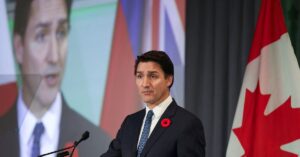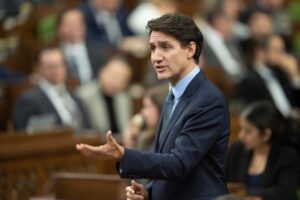
Canada has no immediate plans to follow the lead of the U.S. and shorten the isolation period for those who contract COVID-19 from 10 to five days.
The Public Health Agency of Canada (PHAC) told CTVNews.ca in a statement on Wednesday that officials are aware of the Centers for Disease Control and Prevention’s (CDC) updated guidance and the body will inform Canadians should there be similar steps taken north of the border.
While isolation and quarantine rules may vary across the country based on the directives of local public health experts, federal authorities recommend an isolation period of a minimum of 10 days from the onset of symptoms for a symptomatic case, or from the time of receiving a positive test for an asymptomatic case.
The CDC’s Monday announcement applies to Americans who have tested positive for the virus but are asymptomatic. While not required to isolate after day five, they must be masked when outside of the home for the subsequent five days.
Similarly, those who have come into contact with an individual who has contracted the virus are now able to halve their quarantine period.
However, the new guidance is not a mandate; it’s a recommendation to employers and state and local officials. It comes following a decision last week by U.K. officials to reduce the self-isolation period for vaccinated people who test positive for COVID-19.
The CDC said the change in rules is in keeping with growing evidence that people with the coronavirus are most infectious in the two days before and three days after symptoms develop.
“We followed numerous areas of science in making this important decision. One of course was how the virus behaves, how much virus do you still have that you could potentially transmit after five days and we generally know that most of your transmission potential happens in those one to two days before you have symptoms and those two to three days after,” said CDC director Dr. Rochelle Walensky.
“So by the time five days of isolation have occurred, you probably have about 85 to 90 per cent of all of our transmission potential behind you.”
Dr. Kashif Pirzada, a Toronto-based emergency physician, says shortening the isolation period is still “a bit dangerous,” and should only be implemented if other public health precautions are enforced.
“The issue is if you’re going to put these infected workers back in, you haven’t implemented airborne precautions, and they’re having lunch together, they’re going to spread it to more workers who are going to get COVID-19,” he said.
“It can be done if you do all the safety things like airborne precautions and N95 masks.”
A host of sectors are raising concerns of staffing shortages due to the highly infectious Omicron variant. On Tuesday, Quebec announced that some health-care workers who have tested positive for COVID-19 will be able to stay on the job.
The CDC made a similar recommendation last week should hospitals face a dip in staff.







